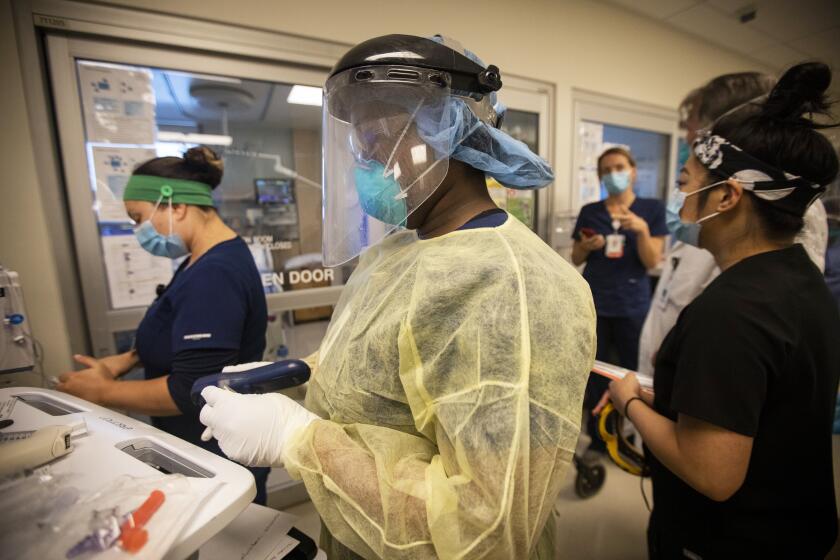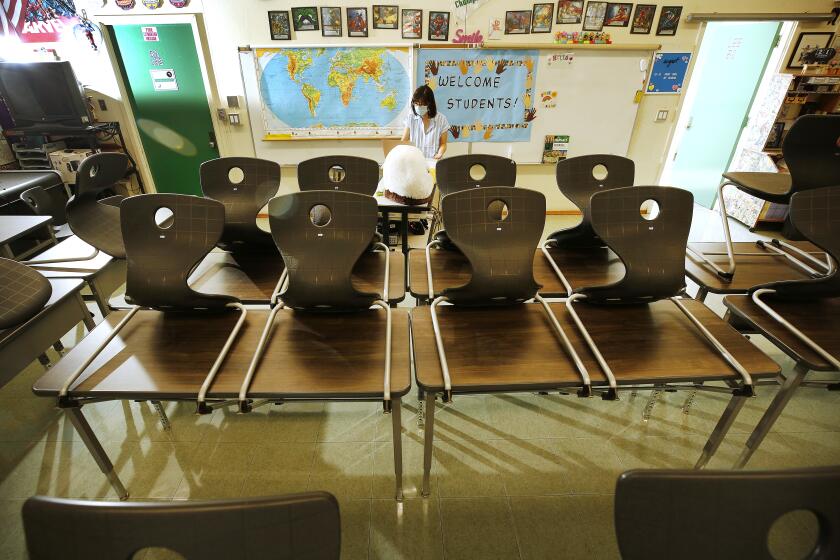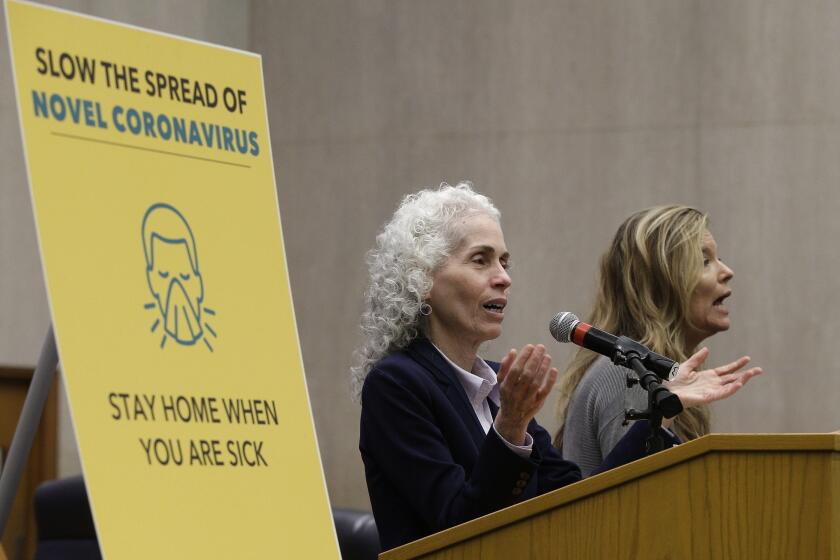L.A. County faces ‘three weeks of devastation’ before COVID-19 surge might slow, experts say

- Share via
The coronavirus wave engulfing California over the last week seems to confirm that the worst of the surge is far from over.
But how bad will it get?
The numbers — which have reached record proportions — still don’t reflect anyone who may have gotten sick during Thanksgiving. Generally, it takes two weeks after an event to determine whether coronavirus transmission occurred, and two additional weeks for hospitalization numbers to increase as a result.
It also will take several weeks for the effects of the latest stay-at-home order, which began in Los Angeles County last week and in much of California just before midnight Monday.
“The stay-at-home orders worked the first time around in that we did, in a sense, flatten the curve and see decreases occurring,” said Dr. Robert Kim-Farley, an epidemiologist and infectious diseases expert at the UCLA Fielding School of Public Health. “So I think we in public health are hopeful that these new regional stay-at-home orders will be able to also reverse this upward trend.”
But the order will hit retailers and essential workers hard at a time when relief from Washington has dried up.
The pandemic that has killed nearly 20,000 Californians and brought an economy to its knees entered a treacherous phase Sunday as much of the state began a new stay-at-home order and coronavirus cases soar.
Sounding alarms
Health experts sounded the alarm as California reported yet another day of record high coronavirus cases and Los Angeles County reported its first daily total that exceeded 10,000 infections. The rise has prompted more than 33 million Californians to be under a regional stay-at-home order. Top health officials say the controls are needed to make sure other holidays don’t become super-spreader events.
“Every state across this country needs to increase their mitigation, and every state needs to be critically informing their state population that the gatherings we saw in Thanksgiving will lead to a surge. It will happen this week and next week,” Deborah Birx, the White House’s coronavirus response coordinator, said on “Meet the Press.”
“We cannot go into the holiday season — Christmas, Hanukkah, Kwanzaa — with the same kind of attitude that: ‘Those gatherings don’t apply to me.’ They apply to everyone, if you don’t want to lose your grandparents, your aunt,” she added.
A rise in COVID-19 cases prompts L.A. school officials to reverse course on reopening. For the rest of the semester, all students will learn from home.
No signs of letting up
Los Angeles County, a hot spot for the virus in California, reported more than 10,500 new cases Sunday. Hospitalizations for COVID-19 neared 3,000.
It was the seventh consecutive day of record-breaking COVID-19 hospitalizations in L.A. County, and more than quadruple the number from early October, when there were about 700 people hospitalized with the disease.
Statewide, average daily coronavirus cases have jumped sixfold since early October, hospitalizations have quadrupled since late October and average daily deaths have nearly tripled in the last month.
Kim-Farley said the trend “means basically that the virus is everywhere, and therefore we’re applying these stay-at-home orders because of the fact that every place is now at higher risk of transmission. I think we have moved from characterizing this as a surge, in my mind, to being basically a viral tsunami in terms of its size.”
Some experts say a harm-reduction approach to public health — educating people how to mitigate risk in their activities — would be more effective than all-or-nothing pleas to abstain from contact with other people.
Grim forecast
In an interview Sunday, L.A. County Public Health Director Babrara Ferrer was blunt in her assessment: “We’re going to see three weeks of devastation before we’ll be able to assess the impact.”
“I am positive that we haven’t seen the full increases in our case numbers associated with the Thanksgiving holiday, just based on the timeline,” she said.
She believes the new restrictions will help — but that will take time. For now, she sees hospitalization surging to as high as 4,000 in the coming weeks.
More to Read
Sign up for Essential California
The most important California stories and recommendations in your inbox every morning.
You may occasionally receive promotional content from the Los Angeles Times.














